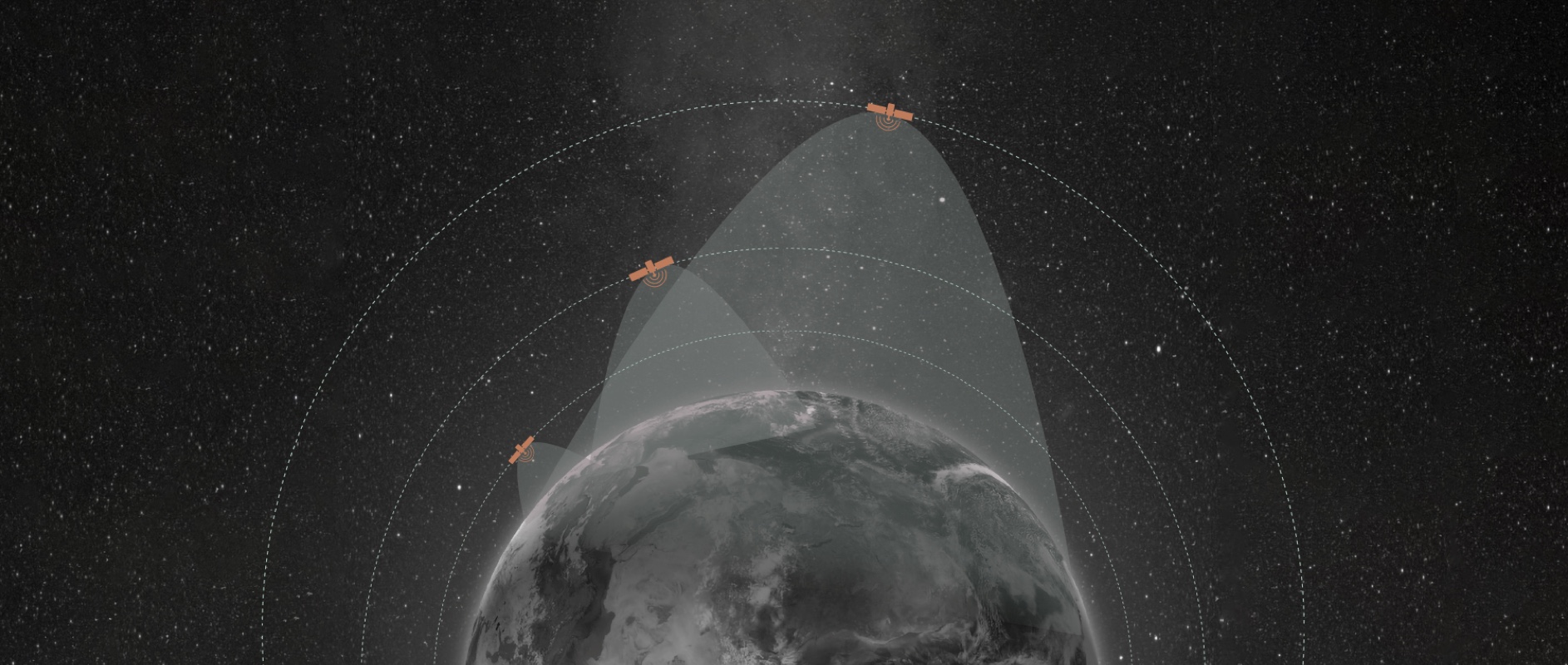A satellite orbits the Earth in a circular or elliptical path – typically at a height of between 160 and 35,800 kilometers. Satellite-based communication requires a free line of sight between the satellite and a station or terminal on Earth. The satellite’s view of Earth and, accordingly, the area that can be served by it, varies according to the altitude of the satellite’s orbit and position. There are three primary altitudes where communication satellites are placed: LEO, GEO, and MEO.
Communication is conducted via radio frequencies
Satellites transmit information to receivers on Earth by way of radio waves, which means that high-quality communication can be made available to remote areas in the world without requiring large investments in terrestrial equipment. The frequency of the radio waves is significant for a number of
properties that are important in satellite communication:
- Frequency bands with a higher frequency typically have greater available bandwidth, which in theory entails higher data rates and higher total capacity.
- On the other hand, higher frequencies are affected and attenuated more by atmospheric effects and weather conditions.
The most common frequency bands used by GEO communication satellites are:
1. Ku- and Ka-bands (10 – 31 GHz):
The bands are typically used for TV broadcasting, VSAT networks, and maritime and aeronautical services. The Ku-band is the band used for Ovzon’s services.
2. C-band (4 – 6 GHz):
Generally used for TV broadcasting, data and voice communication, especially in areas of heavy precipitation.
3. L-band (1.5 – 1.6 GHz):
The L-band is used for purposes such as satellite phones. The relatively narrow spectrum entails major constraints on the total data rate.
4. X-band (8 – 12 MHz):
Mainly used for defense applications.

MEO / Medium Earth Orbit, 2,000–36,000 km from Earth
GEO / Geostationary Earth Orbit, 36,000 km from Earth. The orbit is in the Earth’s equatorial plane and the satellite’s orbital period matches the Earth’s rotation. Accordingly, a GEO satellite appears to be fixed in the sky when viewed from Earth. The satellite’s view of the Earth corresponds to approximately one third of the planet’s surface, and the entire Earth can thus be covered with only four satellites. For this reason, GEO satellites are used for more than 90 percent of all satellite telecommunication. Ovzon’s service currently uses GEO satellites and the company’s planned proprietary satellite will also be located in a geostationary orbit.
Historically, the satellite-based communication market has been divided into two segments: Fixed Satellite Service (FSS) and Mobile Satellite Service (MSS). These boundaries
are not as clearly defined as they once were, as increased investments in new satellites with steerable beams and small mobile terminals blur the dividing lines, a trend that is
expected to continue.


